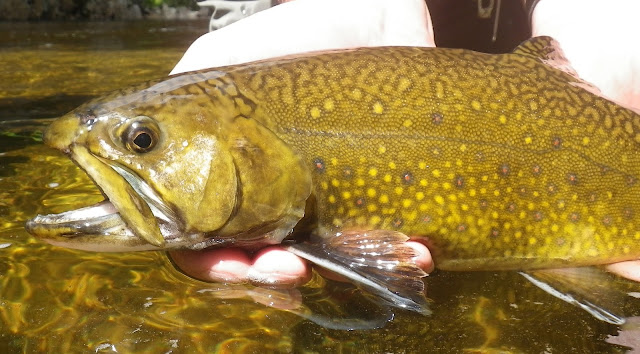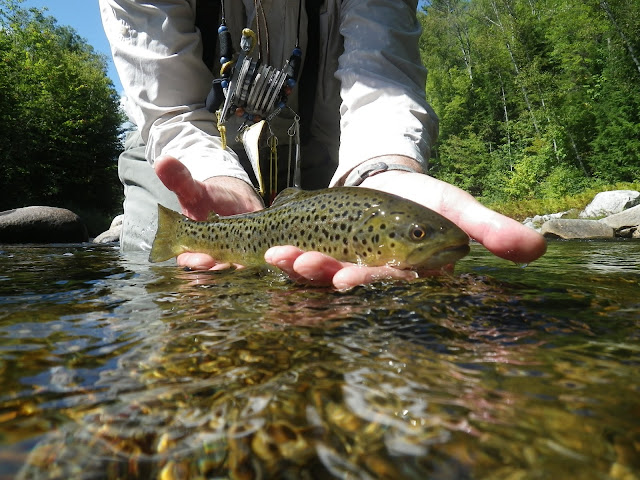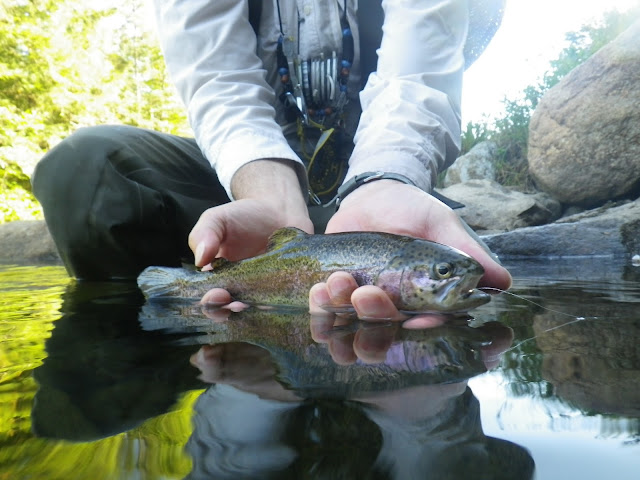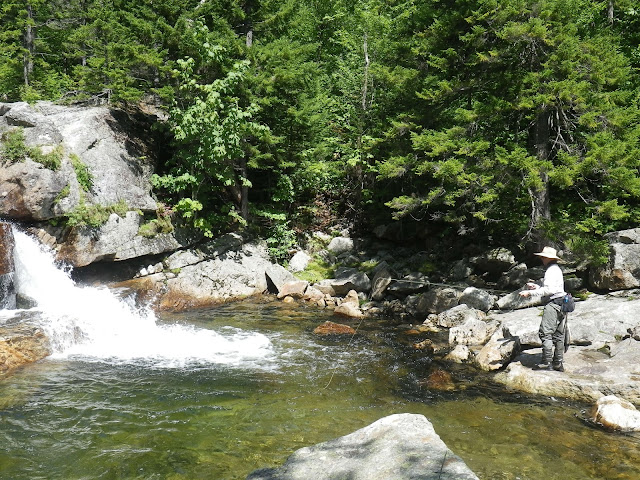Location: New Hampshire. Google Maps: http://goo.gl/maps/MvEeH
Fishing Season: April to October. Please visit http://www.wildlife.state.nh.us/
Licensed Required: Yes, general fishing only.
Fishing Season: April to October. Please visit http://www.wildlife.state.nh.us/
Licensed Required: Yes, general fishing only.
Floating: No. Walk-Wade. Wet-Wading in summer.
Entrance Fee: No.
Camping: Yes. Private and Public, throughout the Mt. Washington Valley.
Length: +/- 25.6 Miles.
Origin: Kancamagus Pass, near Livermore, NH.
Termination: Saco Rver. Saco then flows to the Atlantic Ocean.
Termination: Saco Rver. Saco then flows to the Atlantic Ocean.
Fly Rods: 1wt-4wt during mid/late summer. Perhaps, with high water, 5wt-6wt early spring.
Fly Lines: 90% Floating. 10% Sink.
Flies: Fish are not picky, but we only share this information with our FCFF clients.
 |
| Late August = You must find deep cold water, with lots of structure and flow! |
The Swift River is located in the White Mountain National Forest and runs along side one of the most scenic and traveled roads, the Kancamagus Highway. In the upper reaches of the Swift, you can expect to find wild Brook Trout. In the middle and lower sections you'll find stocked Rainbows and Brown Trout (you can also expect to find lots of people).
Due to heavy pressure from tourist, swimmers, worm-bobber fisherman, I selectively fish this river and despite what many books say about this river, it is not on the top of my list. But, from time to time, I will stop at certain locations and wet the line. Why? Did you see the below photo yet?
The reasons why you want to fish the Swift River:
- Fish: Brook Trout, Brown Trout, Rainbow Trout.
- Location: A short drive from North Conway, NH. You don't want to walk/hike for hours/days. You want to drive, park and fish within a short distance of your car.
- Experience: Parts of the Swift can get very crowded with swimmers/tourist and worm-bobber anglers. But, if you fish it during off season, with the right water flow conditions, the fishing can be good.
- Size: You want to fish a river that lends itself to short cast and delicate presentations.
- Structure: You want a river loaded with rocks, boulders, and small picturesque pools.
- Scenery: You want New England hardwoods, mountains, wild animals.
Option A: If you are too busy and don't have time to plan/research, etc., FCFF would be happy to guide you.
Option B: DIY (Do it Yourself). If you plan to fish the Swift River on your own, a helpful resource is a book called Field Guide to Trout Streams of New Hampshire. http://www.fieldguidesnh.com/troutstream.html This book doesn't offer specific angling tips, but it does provide exact locations where you can pull off, park and fish. Also, on each page, you'll find topographical maps in the book. I find the combination of this book and the NH Atlas & Gazetteer, works best for me. http://shop.delorme.com/OA_HTML/DELibeCCtdItemDetail.jsp?item=234§ion=10096&forge_prod=77XHuVfO0mR45isN3pAjnmLQ:S&forge_prod_pses=forge_prod%3D77XHuVfO0mR45isN3pAjnmLQ%253AS~
Tips:
- Throughout the year, find cold water (especially during the summer months).
- Find fast moving water (FYI, rainbows love fast water). Fish the seam between fast and slow water.
- Find pools and pockets that are at least 5ft deep = prime real estate for fish.
- Find large rocks/boulders = wild brook trout love to hide-hide-hide = you have to put your fly as close to the rocks as possible.
- Move...keep moving! When weather conditions are warm, water is low, you need to find fish located in cold, deep water. The further you fish away from the parking areas, the better the fishing is!
- Time your fishing before and after the holiday bathers/swimmers. Fish above and below known swimming holes/fish pools.
 |
| Caught on a sunny mid-day. To catch a beauty like this, you need to understand what set-up to use. |
At heart, we are DIY walk-hike-wade fisherman. That being said, we encourage you to get outside; fish and explore on your own. But, if you would like some assistance, guiding-lessons, etc., please feel free to contact us.
Final Word:
The Swift River, typically after spring stocking, fishes well and then slows down as the water level drops and daily temps rise. As a result of this annual cycle, you must understand where to find fish that have survived the seasonal attacks from worm-bobber fisherman. Unfortunately, many of the prime trout habitat is also the most popular swimming holes and picnic areas. But, as you can see from my photos, there are a selective few spots where trout will hold.
We hope you enjoyed reading this post. If you have questions or comments, please feel free to do so. Many thanks and hope to see you next season in Patagonia.
Gone Fishing,
Mark
PS. Our business is 100% by referrals (word of mouth). Please feel free to share this amongst friends. Also, you can follow our blog via email, Facebook or Google Connect.
More Pics from the Swift



























